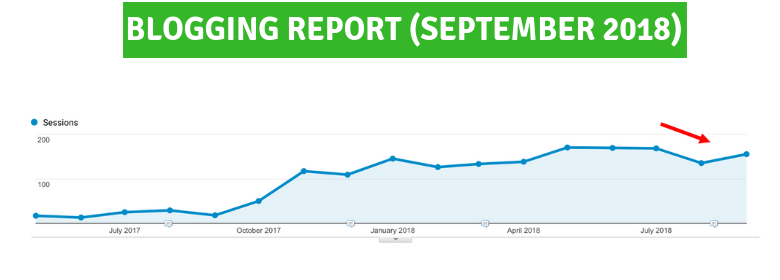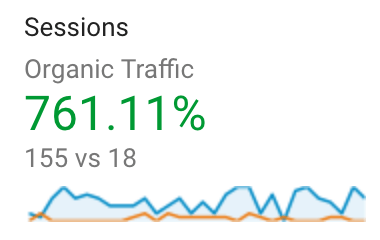Bloggers: Improve Your Productivity by Improving Your Work Environment

Being a blogger is super-exciting – you get to write about numerous cool topics that you are interested in and often have a chance to choose whether you want to do your job from the comfort of your own home or an office. However, since creativity is your main tool, you need to put a lot of effort into nurturing it and your work environment can have a strong impact on it. Therefore, we are now discussing different tips and tricks for improving your productivity by upgrading your work environment.
Let’s take a look.
Don’t let technology distract you

First things first, in business and life, technology can be your best friend and worst enemy. So, it’s crucial to learn how to make good use of all those fun gadgets and apps without letting them distract you and have a negative impact on your productivity. For instance, try to keep your phone on silent and flip it upside down. This way, you won’t check it every five minutes when the screen lights up and this will help you to stay focused much longer. Additionally, you may like playing video games when taking a break, but you can’t have your PlayStation in the office since it will pose a huge temptation and encourage you to slack off.
Let the light in

There is nothing worse than working in a poorly-lit room since your brain naturally shuts off due to the lack of light and you can easily end up suffering from serious headaches. Therefore, you should immediately open up your curtains and let the sunshine in. Just make sure to turn your computer screen in the opposite direction so that you aren’t annoyed by the reflections. Furthermore, you need to invest in a quality table lamp since a ceiling light is often not enough and if it’s behind your back, it will just cast shadows all over your work surface. Lastly, remember that apart from making your office comfy, it will be helpful to create daily and monthly plans and to start every day by completing the most challenging tasks first. This will be extremely stimulating and help you finish all your work successfully.
Improve the air quality

Having to deal with pesky allergens while writing can be extremely hard and significantly hinder your performance. Therefore, it’s crucial to start working on improving the air quality immediately. You can begin by airing out your office regularly and bringing in some greenery as well. All those different potted flowers and exotic dwarf trees will serve as great decoration and enrich your air with oxygen. Additionally, opting for a quality HEPA air purifier will definitely make your life much easier. Owing to it, you won’t have to worry about dust, pollen, mildew and odours ever again.
Bring in comfy furniture

No matter whether you work from home or an office, you need to pamper yourself with a cozy chair which will provide enough support for your back and allow you to sit longer in one position. This is also very stimulating for those bloggers who work from home since having a real office chair can help them get in the right work mood instead of just spending time in a laidback environment that will spoil their creativity and readiness to give their 100%. On top of that, investing in a height-adjustable desk would be a super-smart solution, especially if you are a tall person who usually has to sit hunched over their laptop all the time. You can even try out a standing desk for a change, especially if you like brainstorming while moving around your office.
Add a personal touch

In order to be able to be fully productive, a person must feel relaxed and at peace. One of the best ways to achieve this is by adjusting your work environment and adding a personal touch to it. For instance, you can place a photo of your family on your desk, or hang some posters with your favorite natural scenery or a city skyline. This way, every time when you feel blue, you’ll have something to give you a boost of energy and help you continue your work.
Choose the right colors

Last but not least, colors can have a huge influence on our brain and help us stay focused and energized. Of course, these rules may differ from person to person, so it’s important to experiment with different tones until you discover what works best for you. In general, earthy shades are considered to have a calming effect on people, so if you function better in a peaceful atmosphere, think about painting your office in a nice light beige or mint green nuance. On the other hand, adding a few fiery elements can help you regain your energy and boost your imagination. In case you feel that you lack those, feel free to paint an orange accent wall or spice up your office look by introducing a few red accessories as well. Just try not to overdo it since too many bold shades can be extremely distracting and make it hard for you to stay concentrated and immersed in your work.
As you can see, improving your work environment can be fun and absolutely beneficial to your productivity. You just need to discover what suits you personally and not be afraid to go for it. After all, it’s better to invest in your office space now, then to let your work constantly suffer due to the lack of creativity and innovative ideas.
If you haven’t started your blog yet, what are you waiting for? You should take a look at this!












 Maycon Diniz Lopes is the content manager of Serpbook. Serpbook is an online platform that gives you information about everything you need to monitor, automate and report on your keyword rankings. It also provides you with local and global SEO rank tracking in real time for Google, Bing, and Yahoo.
Maycon Diniz Lopes is the content manager of Serpbook. Serpbook is an online platform that gives you information about everything you need to monitor, automate and report on your keyword rankings. It also provides you with local and global SEO rank tracking in real time for Google, Bing, and Yahoo.



